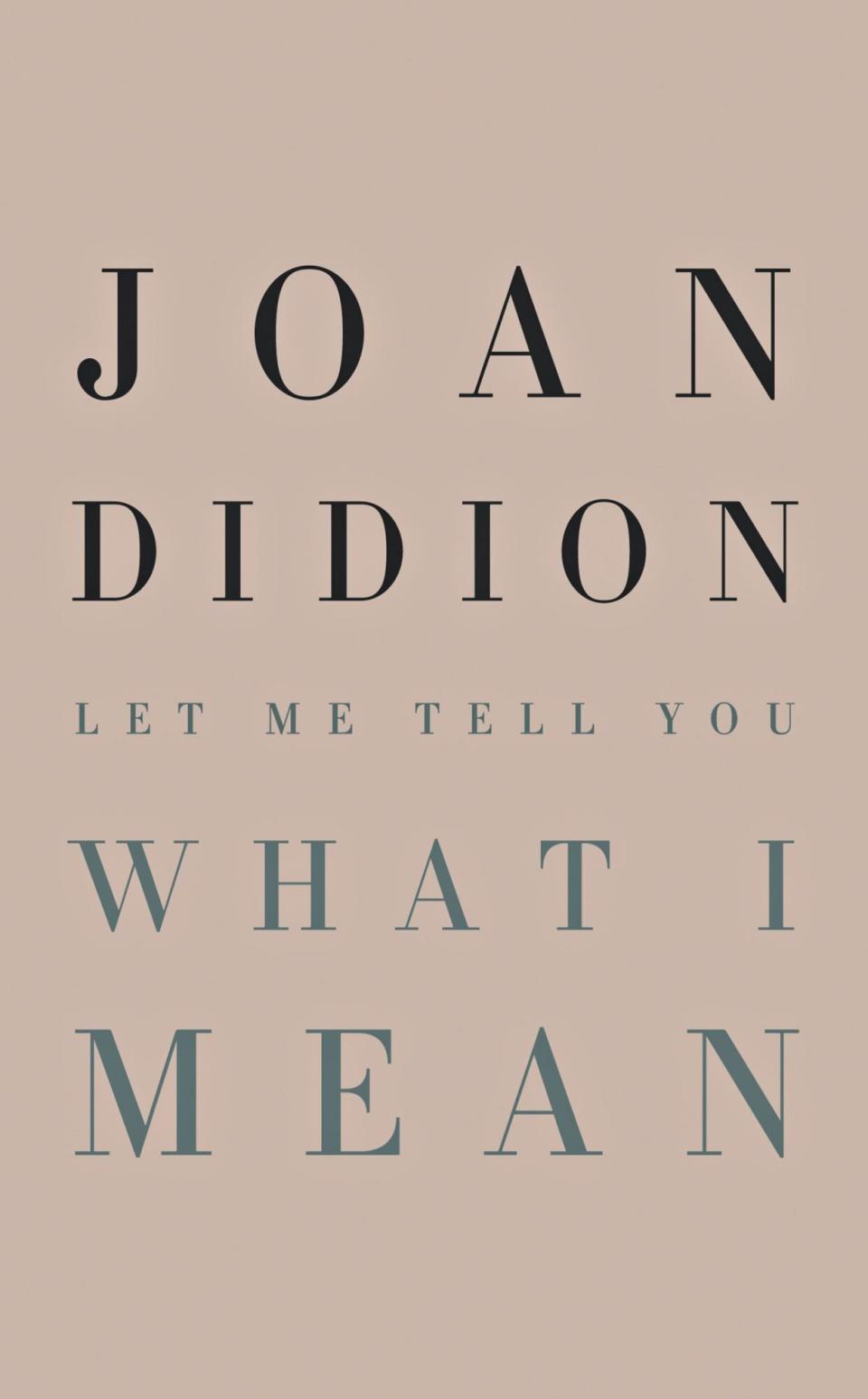The Center Will Still Hold: On the enduring legacy of Joan Didion
To be a certain kind of girl (or boy, though their heroes always seem a little easier to come by) is to dream at some point of growing up to be Joan Didion. In the diamond-cut clarity of her prose, both fiction and journalism found a new touchstone; in her cool-eyed persona — that famed mystique, wreathed in cigarette smoke and ennui — lay the promise of a life less ordinary, one where glamour and gravitas could somehow coexist.
In what implausible world, after all, would any mere writer — a woman, no less! And by then an octogenarian — be deemed aspirational enough to sell sunglasses that cost more than a smartphone, as Didion did in a 2015 ad campaign for the Parisian fashion house Céline? Or retain the sort of relevance, more than 50 years into her career, that the advent of a new collection becomes a bona fide literary event? Accordingly, Let Me Tell You What I Mean arrives with the uncommon weight of expectation, and not a little bit of fear — in the purely morbid sense that this could be her last, yes (at 86, she's only mortal), but also that her legendary instincts might have faltered, a late-game blot on her legacy. The latter concern is mitigated at least in part by the dates on the pages inside: a dozen previously uncollected pieces conceived between 1968 and 2000.

Knopf Publishing
That places it well before the cascade of personal tragedies that precipitated her National Book Award-winning 2005 memoir The Year of Magical Thinking and its 2011 follow-up Blue Nights, but still at her zenith — an improbable run that produced the now-iconic reportage of Slouching Towards Bethlehem and The White Album; novels like Play It as It Lays and A Book of Common Prayer; and alongside her late husband, John Gregory Dunne, a noted clutch of screenplays, including The Panic in Needle Park and the 1976 reboot of A Star Is Born (see opposite page). Wherever the zeitgeist went she seemed to bottle it, turning out indelible portraits of Haight Street hippies and El Salvadoran death squads, John Wayne and Patty Hearst, Manson girls, and the Central Park Five.
It's that storied ability to seek out the ruthless truth in her disparate subjects — to shed "a sort of awful and beautiful light on a world we half see but don't want to see," as The New Yorker critic Hilton Als puts it in his heady introduction — that has become her signature. Though the subjects of the slim but satisfying Let Me Tell You do tend to tread, in the unforgiving canon of Joan, comparatively lightly on dread: Opener "Alicia and the Underground Press" delivers a brief but withering critique of mainstream media that feels both eerily prescient of our current fake news multiverse and almost quaint in its frank distaste for anodyne human-interest blurbs and the lie of "objectivity." There's a different jolt of recognition in "On Being Unchosen by the College of One's Choice," a wry, still-timely glimpse into the self-flagellating game that is higher education. (Picture a woebegone teenage Didion if you can, weeping over a Stanford rejection letter on her closet floor.)
"A Trip to Xanadu" takes the quintessential California myth of William Randolph Hearst's San Simeon castle and places it smartly where it should stay, in the "theatrical mists" of fantasy, while "Fathers, Sons, Screaming Eagles" turns a sharp lens on the awful continuity of young men and war. Several pieces draw a more literal throughline to her past catalog, expanding fragmentary asides from The White Album — about a meeting for gambling addicts ("Getting Serenity" ), for instance, or the then California governor's wife Nancy Reagan ("Pretty Nancy") — into fuller, richer stand-alones. There are bittersweet remembrances of personal friends such as director Tony Richardson ("The Long-Distance Runner") and cooler takes on divisive celebrities of the day, including Robert Mapplethorpe ("Some Women") and a pre-incarceration Martha Stewart ("Everywoman.com"), that tend at times to feel too much of their era.
In nearly every paragraph, though, are hallmarks of what Als calls "the Didion gaze" — the callbacks and repetitions, the clean snap of a telling detail, the almost pathological aversion to sentiment and cliché. The act of writing becomes a recurring theme via "Telling Stories," "Why I Write,"and "Last Words," her cautionary ode to Ernest Hemingway. (It's a love letter of a kind, but a fittingly astringent one from somebody who views words as "tools, toys, weapons to be deployed strategically on a page"). Of her literary ambitions, Didion recalls early on: "I wanted not a window on the world but the world itself. I wanted everything in the picture. "Instead, she became the window and the picture, a visionary who for more than half a century has shown us how to look through a glass darkly, and see anew.
Related content:

 Yahoo Movies
Yahoo Movies 
